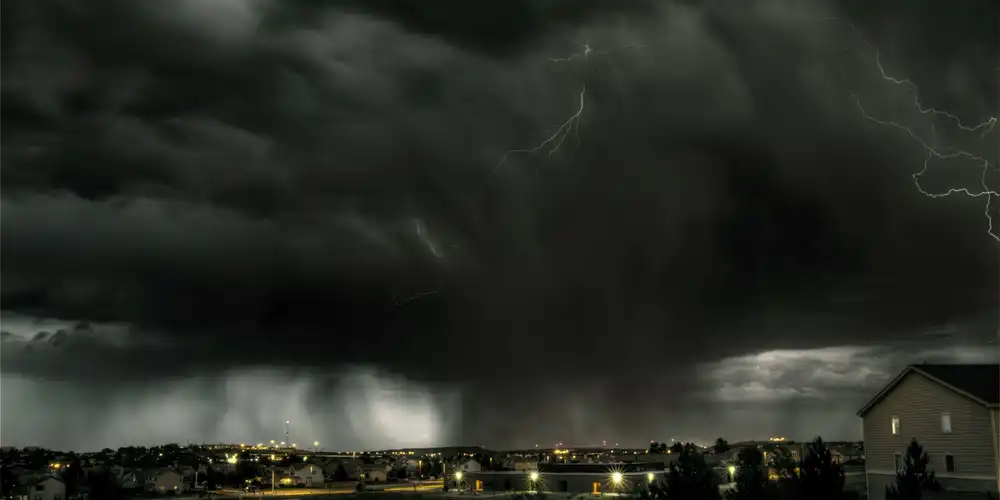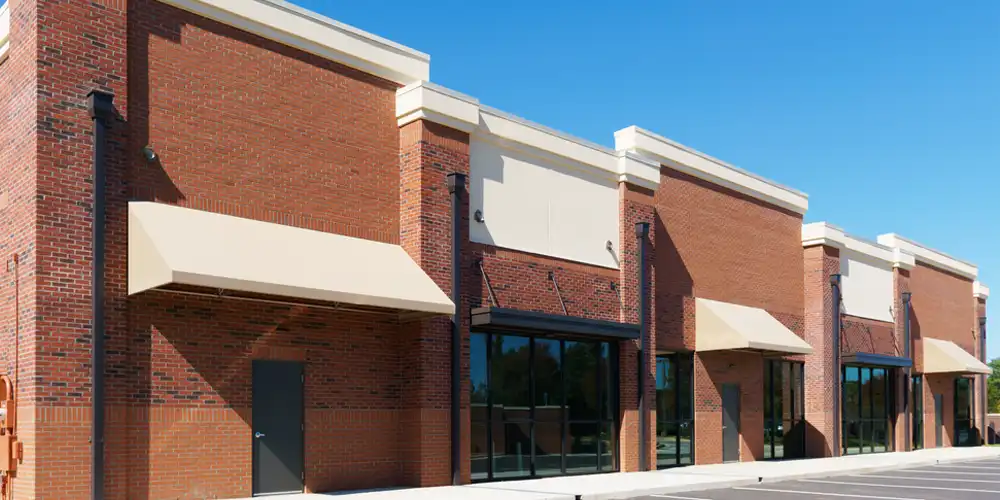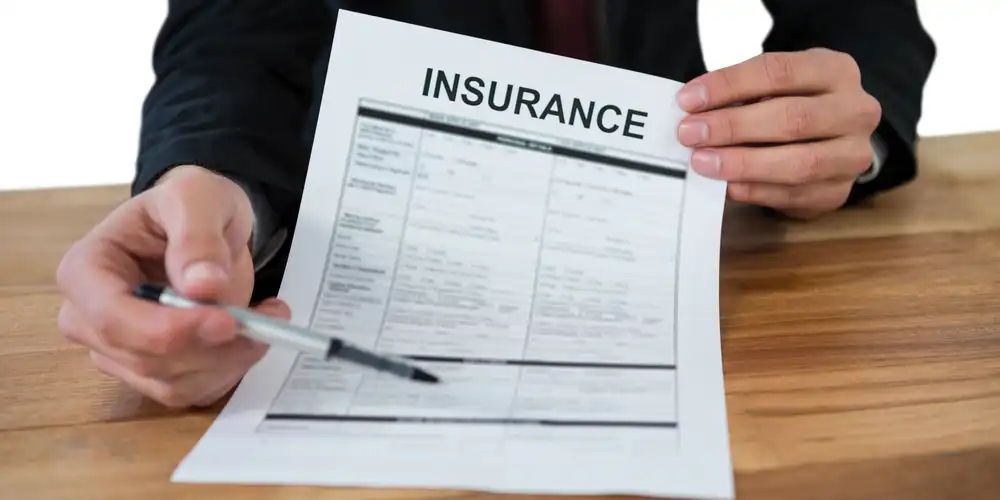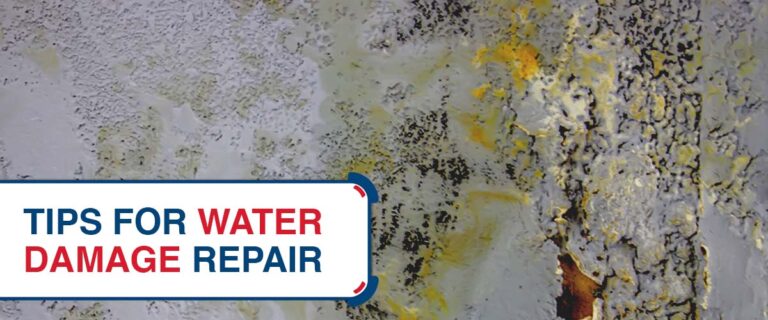Are you prepared for the unexpected? Mother Nature can be fierce, but your business can weather any storm with the right strategies. Join us as we unveil the keys to business resilience. The weather can be uncertain, just like the potential destruction that comes with it. Businesses are particularly vulnerable to storm-related adversity, leading to significant financial losses, downtime, and closure.
Moreover, businesses must implement commercial storm mitigation strategies as a proactive approach to protect their assets and ensure continuity during and after storms. This article will explore the importance of commercial storm mitigation and how it can safeguard your business and minimize financial losses.

Understanding Commercial Storm Mitigation
Commercial storm mitigation refers to the various proactive measures businesses can undertake to minimize the potential adverse effects of storms. Additionally, the main objective of this approach is to protect businesses, their physical assets, and their overall operations from damage caused by severe weather events.
Proactive storm mitigation offers numerous benefits to businesses, including:
- Reduced risks
- Improved preparedness
- Enhanced resilience
Employing professional experts in storm mitigation is also essential in assessing vulnerabilities and implementing effective measures that ensure long-term sustainability.

Identifying Potential Storm Hazards for Businesses
Common storm hazards for businesses are weather events that can cause damage and disruption to commercial properties. These hazards include:
- Strong winds – High-speed gusts can tear off roofs and cause damage.
- Heavy rainfall – Excessive rain can lead to damaging floods.
- Lightning – Strikes can damage buildings and electronic devices.
- Hailstorms – Hail can damage roofs, windows, and property.
The potential consequences of these hazards on commercial properties include:
- Structural damage, such as roof and facade issues
- Power outages due to downed electrical lines
- Business interruptions impacting operations and revenue
Conducting a comprehensive risk assessment is imperative to address the vulnerabilities associated with these hazards effectively. It also provides insight into possible areas of mitigation measures and the necessary steps to ensure business continuity.

Essential Components of Commercial Storm Mitigation
Commercial storm mitigation in Lawrence, KS, encompasses many measures. Here are some critical components of commercial storm mitigation:
· Building reinforcement
Strengthening the structure to minimize damage caused by storms.
· Emergency response plans
Predefined procedures to ensure personnel safety during and after a storm.
· Business continuity strategies
During and after a storm, plans are put into place to allow for the continuation of vital operations.
Moreover, securing roofing, windows, and doors is crucial in minimizing damage from high winds and hail during storms. Reinforcement and impact-resistant materials can also help prevent structural failure and water intrusion. Additionally, reliable communication systems and backup power sources are essential during storms to ensure businesses can maintain critical operations and keep stakeholders informed.

Engaging Professionals for Commercial Storm Mitigation
Professionals in commercial storm mitigation possess expertise and experience in mitigating storm damage. They specialize in storm sciences, building codes, and best practices.
Professional expertise plays a crucial role in effective commercial storm mitigation. Experienced professionals can:
- Assess vulnerabilities through comprehensive inspections and risk assessments.
- Recommend appropriate measures tailored to the specific needs of the building.
- Execute mitigation strategies using their technical skills and access to advanced tools and materials.
In addition, collaborating with professionals ensures effective and durable mitigation measures, reducing potential damages and associated costs, and ongoing support and maintenance to stay resilient in future storms.

Insurance Considerations for Commercial Storm Mitigation
Insurance coverage protects commercial properties against storm-related damages and losses. Policies cover high winds and hail, business interruption, and extra expenses. Additionally, reviewing policies helps businesses understand coverage limits, exclusions, and gaps in protection. This knowledge also allows organizations to take necessary steps towards better protection through storm mitigation measures.
Furthermore, consulting with insurance professionals helps businesses assess coverage needs and make informed decisions to mitigate potential financial losses from storm-related risks.

Employee Education and Preparedness
Employee education on storm response and safety protocols is essential for their well-being and the effective implementation of storm mitigation measures. Regular training sessions and drills for emergency evacuation and sheltering have several significant benefits, such as:
- Familiarizing employees with evacuation routes and procedures
- Building a culture of preparedness and proactive response
- Enhancing communication and coordination during emergencies
- Increasing employee confidence in storm response and asset protection
Employees play a critical role in implementing storm mitigation procedures and safeguarding business assets, thereby contributing to the resilience and protection of the organization.

Monitoring and Maintenance for Ongoing Protection
Regular property inspections and maintenance are vital to identify and address vulnerabilities, preventing potential storm damage and ensuring the long-term integrity of commercial properties.
The following are the benefits of technological advancements:
- Storm monitoring systems – Provide real-time data on weather conditions, enabling organizations to anticipate and prepare for storms.
- Weather alerts – Alert businesses to approaching severe weather, allowing them to take timely action and protect their property and employees.
Consistent monitoring and timely upkeep help ensure ongoing protection by enabling organizations to proactively address potential risks and maintain the resilience of their property and assets.

Storm-Ready, Business-Steady
As storms become more severe and frequent, commercial storm mitigation is not just a good idea; it’s crucial to protecting your business, ensuring business continuity, and protecting your employees and assets. Storms can be unpredictable, but with a proactive approach to mitigation, you can weather any storm that comes your way.
Furthermore, prioritize storm mitigation strategies, seek professional guidance, and stay prepared. Your business’s future may depend on it. So, whether you’re a seasoned business owner or starting, remember: a little preparation today can save you a world of trouble tomorrow.
References:
- Ten storm preparedness tips for your small business. (n.d.). University of Houston Small Business Development Center Network. Retrieved from https://www.sbdc.uh.edu/sbdc/storm-preparedness-tips.asp
- Mitigation matters. (2019, October 3). Insurance Institute for Business & Home Safety. Retrieved from https://ibhs.org/public-policy/mitigation-matters/








